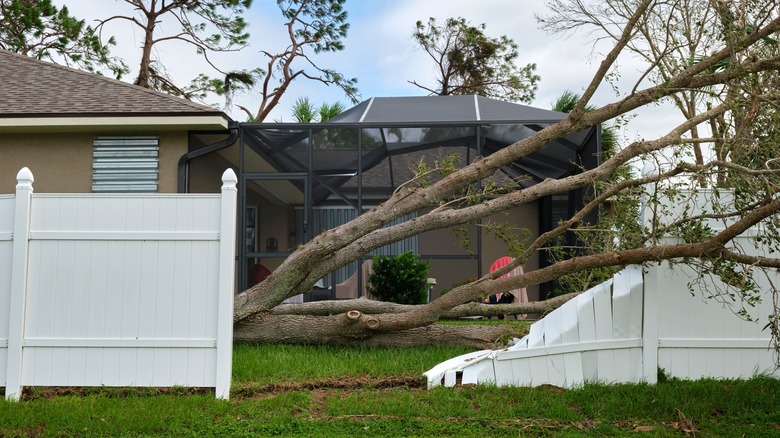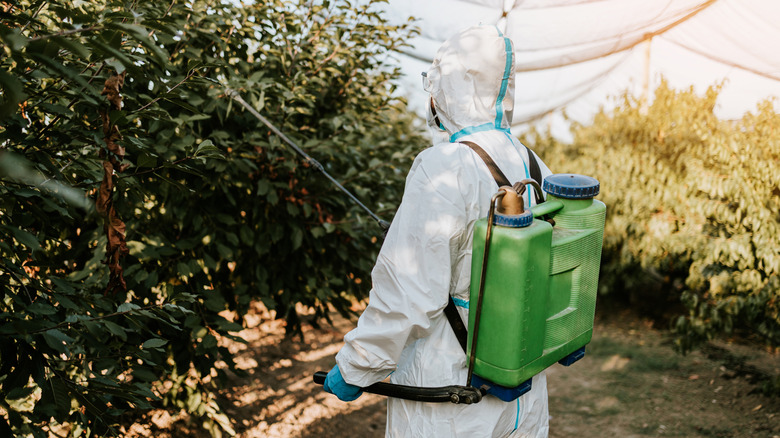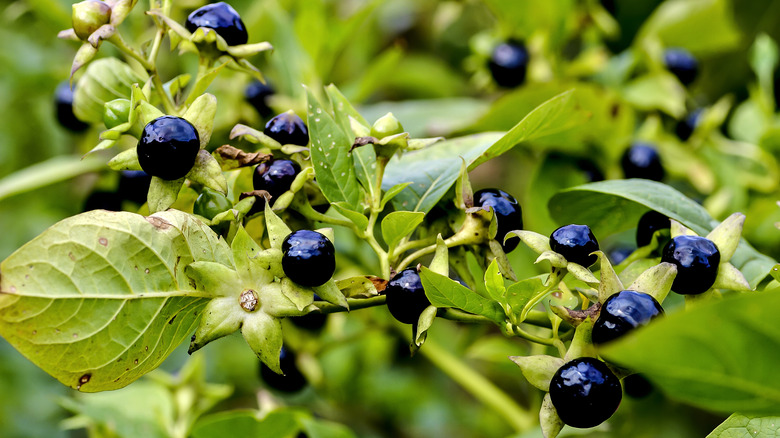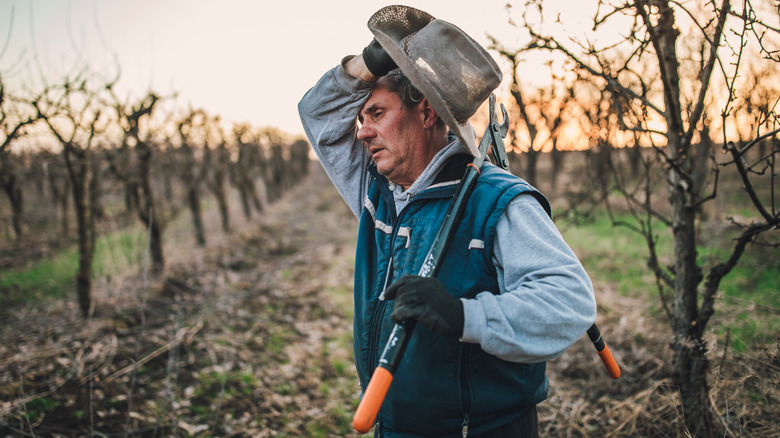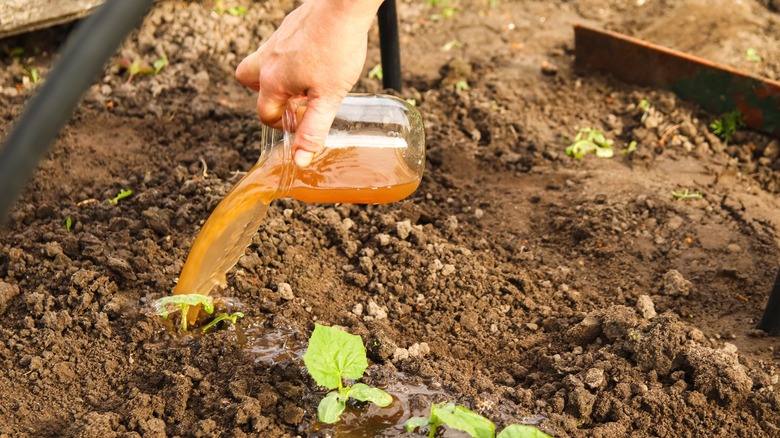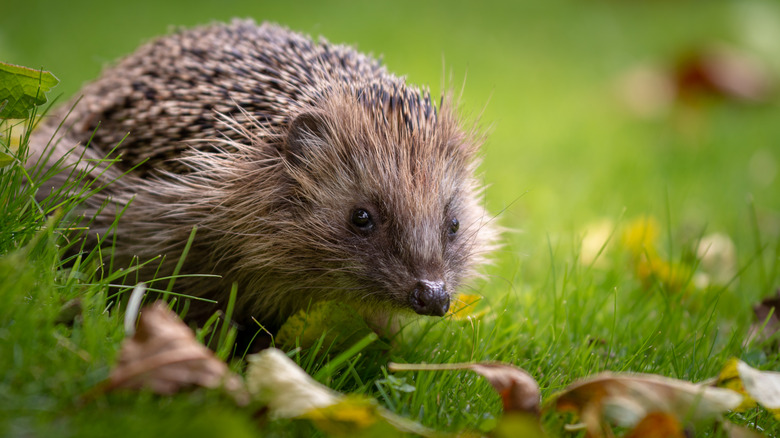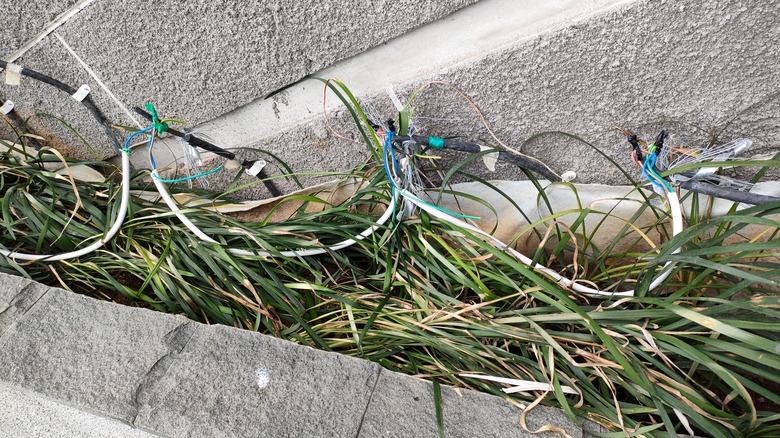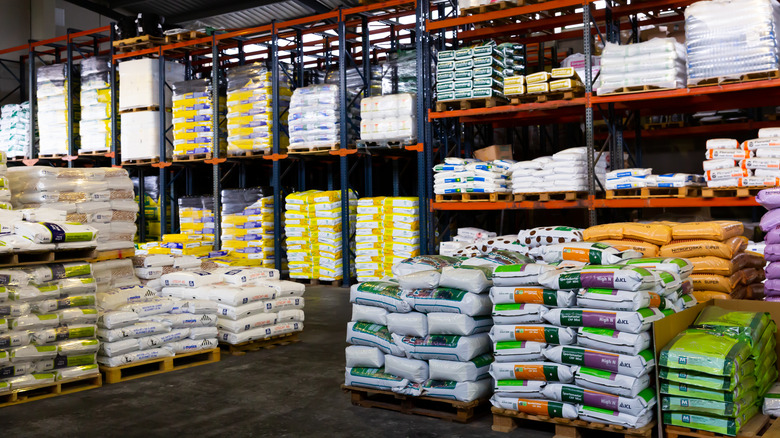Sneaky Dangers Of Gardening You Should Be Aware Of
Gardening is not just the cultivation of plants; it is a nurturing process that extends to the soul. The act of tending to a garden can be remarkably therapeutic, offering solace, and providing a tangible connection to the natural world. The vibrant colors, fragrant blossoms, and the rhythmic cycle of growth and bloom contribute to a sense of fulfillment and accomplishment. However, amidst the blossoming beauty and the therapeutic nature of gardening, there exists potential hazards that may throw off the tranquility of your garden sanctuary.
While cultivating a garden is undoubtedly a gratifying endeavor, it's paramount to recognize that beyond the surface-level serenity lies a spectrum of challenges and risks. As we immerse ourselves in the joyous act of planting, pruning, and nurturing, it becomes imperative to acknowledge the subtle threats that may be concealed. This nuanced perspective doesn't diminish the joys of gardening; rather, it underscores the importance of informed and cautious cultivation.
We're shedding light on these often overlooked concealed hazards that may lurk beneath your garden. Armed with awareness and practical knowledge, you can transform your gardening experience into not only a source of joy but also a safe and secure haven for both plants and enthusiasts alike.
Chemical exposure
Numerous gardening products, ranging from fertilizers to pesticides, often conceal within them a complex cocktail of potentially harmful chemicals. In recent years, studies, like those in the International Journal of Environmental Health Research have shed light on the connection between pesticides and a number of health concerns, ranging from skin irritations to more chronic illnesses. These potential consequences underscore the need for vigilance when working with pesticide-containing substances.
When engaging with gardening chemicals, strict adherence to safety guidelines becomes paramount. These guidelines, meticulously outlined on product labels, offer a roadmap to responsible application. Deviation from these protocols can amplify the risks associated with chemical exposure. Moreover, the adoption of protective gear is not a mere suggestion but a proven strategy to act as a formidable barrier against the insidious infiltration of harmful substances. While it is not necessary to don a full-body hazmat suit when tending to your own personal garden, supplies like gloves shield the hands, and masks protect the respiratory system. Both together constitute a frontline defense against unintended exposure.
Poisonous plants
The allure of gardening, with its kaleidoscope of colors and fragrances, can sometimes overshadow the subtle dangers that certain plants harbor. When it comes to poisonous plants, aesthetic beauty may cloak potentially harmful consequences. Oleander, for instance, contains cardiac glycosides that can lead to severe cardiovascular issues if ingested. Foxglove, with its alluring bell-shaped flowers, harbors compounds that affect the heart's rhythm. The castor bean plant contains ricin, a highly toxic protein that can cause severe poisoning. However, the list of poisonous plants extends beyond these notorious examples and includes various species with varying degrees of toxicity, necessitating a heightened awareness among garden enthusiasts.
To safeguard against these risks, meticulous research and identification of potentially poisonous plants in one's garden become imperative. Various authoritative plant databases, botanical resources, and guidance from local gardening experts can aid in building a comprehensive understanding of the plants present and their potential hazards. This knowledge empowers gardeners to make informed decisions about the selection and placement of plants within their landscapes, particularly in areas accessible to children or pets.
The emphasis on research and identification also extends to recognizing the specific symptoms of plant poisoning. Early detection of symptoms such as nausea, vomiting, dizziness, or skin irritation can prompt swift action and potentially mitigate the severity of harm. Additionally, displaying clear signage or labels in the garden can serve as a proactive measure, alerting visitors and family members to the presence of potentially poisonous plants.
Sun exposure
The radiant warmth of the sun, a fundamental source of life for gardens and gardeners alike, casts both a glow and a potential shadow on our outdoor pursuits. Gardening often involves extended periods of sun exposure, a double-edged phenomenon that can bring both therapeutic benefits and hidden risks. Prolonged exposure to the sun's ultraviolet (UV) rays poses a genuine threat to our skin, beyond the discomforting sting of sunburn, potentially causing premature aging, sunspots, and an increased risk of skin cancer.
Understanding the nuances of sun exposure entails recognizing the broader implications on skin health. The arsenal against the sun's potential harm is multifaceted, encompassing both behavioral and protective measures. Wide-brimmed hats, long sleeves, and pants act as physical barriers, limiting direct skin exposure to the sun's rays. In tandem with protective clothing, the application of sunscreen stands as a pivotal line of defense. Gardeners are encouraged to choose broad-spectrum sunscreens with a high Sun Protection Factor (SPF) and to reapply it regularly, especially after sweating or water exposure. This dual approach, combining protective clothing and sunscreen application, forms a comprehensive shield against the sun's potential harm.
Hydration, often overlooked in the midst of gardening activities, emerges as a crucial component of sun exposure management. The combination of physical exertion and sun exposure can lead to dehydration, heightening the risk of heat-related illnesses. Maintaining adequate fluid intake during gardening sessions becomes imperative, aligning with medical advice and serving as a proactive measure to counterbalance the body's water loss.
Allergies and respiratory issues
The immersive experience of gardening, characterized by the rustle of leaves, the fragrance of blooms, and the gentle caress of the breeze, is not without its subtle challenges. The harmonious symphony of flora conceals microscopic particles like pollen and mold, which, when airborne, can pose a risk to the respiratory system and exacerbate existing allergies.
For those with allergies, navigating the garden requires minimizing the risk of adverse reactions. Wearing a mask, especially during peak allergy seasons, stands as a defense against inhaling allergens. This simple yet effective measure significantly reduces the likelihood of respiratory irritation and allergic responses, providing a practical solution to enjoy the therapeutic benefits of gardening without compromising respiratory well-being.
However, the challenge extends beyond airborne allergens. Certain plants release substances that can cause skin reactions, ranging from mild irritation to more severe dermatological responses. Gardeners, cognizant of this potential risk, are advised to adopt a multi-faceted approach to safeguard their skin health. Appropriate clothing, including long sleeves and pants, serves as a physical barrier, minimizing direct contact with plant irritants. Gloves further protect the hands, preventing skin exposure during planting or pruning activities. For an additional layer of defense, the consideration of barrier creams offers a proactive measure to create a protective shield against potential skin irritants.
Insect bites and stings
Gardens, teeming with life and vibrant biodiversity, introduce a dynamic interplay between flora and fauna. However, amidst the buzzing symphony of insects, there lies an inherent risk—encounters with stinging and biting insects that, while integral to the ecosystem, can pose potential threats to garden enthusiasts. Bees, wasps, and mosquitoes, drawn to the nectar and foliage, may inadvertently transform the tranquil garden into a zone of potential hazards.
Beyond the momentary discomfort of a sting or bite, these encounters can lead to allergic reactions and, in the case of ticks, the transmission of serious diseases such as Lyme disease. The garden, especially in wooded areas, becomes a potential hotspot for tick exposure, elevating the need for proactive measures to ensure a safe gardening experience. Mitigating the risks of insect bites and stings centers on protective clothing and strategic repellent usage. Wearing long sleeves and pants minimizes exposed skin, reducing the likelihood of insect encounters and serving as an effective defense against potential allergic reactions. In areas where ticks are prevalent, the integration of tick repellent into one's gardening routine is crucial for reducing the risk of tick bites and, consequently, the transmission of Lyme disease.
Musculoskeletal strain
Gardening is a dynamic physical endeavor that intertwines the gardener with the elements of soil, plants, and tools. While the rewards are abundant, it is crucial to recognize the potential for musculoskeletal strain. The repetitive motions, lifting, and bending intrinsic to this activity have the potential to strain muscles and joints, underscoring the importance of adopting a mindful and proactive approach to safeguard one's physical well-being.
Incorporating proper body mechanics is a fundamental aspect of gardening practices. This involves maintaining a neutral spine, bending at the knees instead of the waist, and utilizing the strength of the legs rather than relying solely on the back when lifting objects.
Recognizing that prevention is the cornerstone of musculoskeletal well-being, gardeners are encouraged to integrate strategic breaks into their gardening sessions. These intervals serve as opportunities to stretch, hydrate, and allow fatigued muscles to recover. The implementation of regular breaks is not just a momentary respite; it is a proactive measure that fosters endurance, reduces the risk of overuse injuries, and ensures a more enjoyable and sustainable gardening experience over the long term.
Overuse of fertilizers
Fertilizers provide essential nutrients to fuel plant growth and enhance overall vitality. However, a delicate balance must be struck, as the excessive use of fertilizers can unravel the very harmony they aim to create. Plants have specific nutritional needs and surpassing these requirements can lead to adverse effects. The temptation to over-fertilize, driven by the desire for lush greenery and vibrant blooms, may inadvertently harm the very plants one seeks to nurture. Excess nutrients can cause nutrient imbalances, stunted growth, and, paradoxically, increased susceptibility to diseases.
The environmental repercussions of over-fertilization reverberate far beyond the garden beds. Nitrogen and phosphorus, common components of fertilizers, can leach into the soil and find their way into water sources. This runoff poses a significant threat to aquatic ecosystems, leading to nutrient pollution in rivers, lakes, and oceans. The resultant phenomenon, known as eutrophication, can trigger algal blooms, deplete oxygen levels, and harm aquatic life, creating a cascading effect that impacts the delicate equilibrium of ecosystems.
To mitigate these risks, the adherence to recommended application rates becomes imperative. Scientific research and agricultural best practices emphasize the importance of tailored fertilization plans that align with the specific needs of different plants. Moreover, gardeners are urged to be vigilant regarding runoff into water sources. Mindful application practices, such as avoiding fertilizing before heavy rainfall and incorporating slow-release fertilizers, can significantly reduce the likelihood of nutrient runoff. Following these guidelines not only optimizes plant health but also contributes to the sustainable management of soil fertility and ecosystem biodiversity.
Wild animals and pests
While the garden is a haven for plants, it also beckons a myriad of creatures, both large and small, some of which pose potential safety risks that extend beyond the immediate threat of damaged crops. In certain instances, these creatures may harbor diseases that can be transmitted to humans or other animals. Among the potential hazards are encounters with snakes, rodents, and various other creatures that may inhabit or venture into garden spaces. Gardeners are advised to exercise caution, especially in areas where these animals are known to frequent, reducing the risk of accidental encounters and potential bites.
Balancing coexistence with wildlife and managing pest populations necessitate a commitment to safe and humane practices. Traditional methods of pest control, such as chemical pesticides, may have adverse effects not only on the environment but also on non-target species. A more enlightened approach involves the adoption of pest management strategies that prioritize ecological balance. This includes the introduction of natural predators, the use of barriers, and the cultivation of plants that naturally deter pests.
Crucially, the implementation of humane methods for pest control underscores a commitment to the ethical treatment of wildlife. Rather than resorting to lethal means, gardeners can explore alternatives such as traps and repellents that avoid unnecessary harm to animals. By embracing these practices, gardeners can foster a symbiotic relationship with the ecosystem.
Electric and irrigation hazards
The garden, often illuminated by the hum of electrical tools, becomes a workspace where the fusion of technology and horticulture occurs. Electrical tools, ranging from lawnmowers to trimmers, can pose risks if not handled with care. Regular inspection and maintenance of electrical equipment emerge as foundational practices in mitigating these risks. Periodic checks for frayed cords, damaged plugs, or malfunctioning components serve as preemptive measures to identify potential issues before they escalate.
In the realm of electrical hazards, the application of proper safety measures becomes non-negotiable. This includes the utilization of Ground Fault Circuit Interrupters (GFCIs) to prevent electrical shocks, especially in outdoor environments where moisture is a prevalent factor. Gardeners are encouraged to exercise caution when handling electrical equipment in damp conditions and to avoid the use of extension cords that may be prone to wear and tear. This conscious approach aligns with established safety guidelines, fostering an environment where the benefits of technology can be harnessed without compromising personal safety.
Irrigation systems, another integral facet of modern gardening, introduce a different set of considerations. While they offer efficient water distribution, poorly maintained systems can lead to water-related hazards. Regular inspection of irrigation components, such as pipes and valves, is essential to identify leaks and prevent water wastage. Additionally, the strategic placement of irrigation systems away from electrical components helps minimize the risk of water-induced electrical hazards, ensuring a seamless and safe watering process.
Chemical storage
The garden shed, often a repository for an assortment of chemicals, becomes a potential hotspot for accidents if not managed with care. Improper storage of garden chemicals can result in unintended consequences, ranging from chemical spills to the contamination of surrounding areas. To avert such scenarios, it is paramount to adhere to best practices, beginning with keeping chemicals in their original containers. The packaging is designed to withstand the substance's chemical properties, preventing potential reactions that may occur with alternative storage solutions.
Moreover, the storage location plays a pivotal role in mitigating risks associated with garden chemicals. A secure, well-ventilated area is crucial to prevent the buildup of fumes that may be emitted by certain chemicals. This not only ensures the longevity and efficacy of the chemicals but also minimizes the risk of inhaling potentially harmful substances. The selection of an appropriate storage space should take into account factors such as temperature stability and accessibility, creating a controlled environment that prioritizes safety.
Particularly when it comes to chemicals that pose potential harm to curious hands and paws, the practice of locking up these substances is a non-negotiable safety measure. Securing garden chemicals out of reach of children and pets involves the use of lockable cabinets or storage containers. This strategic approach not only prevents accidental ingestion or contact but also reinforces the importance of responsible chemical handling within the household.
